Bees, wasps etc.
Bees
Most bees have hairy bodies and legs which are ideal for collecting pollen. The Honey Bee and all the Bumblebees are social, living in colonies with a single queen. All other bees are solitary, each female creating its own nest, although sometimes there will be lots in close proximity. There are about 250 British species, although many are in decline due to changing farming practices and habitat loss.
Red-tailed Bumblebee
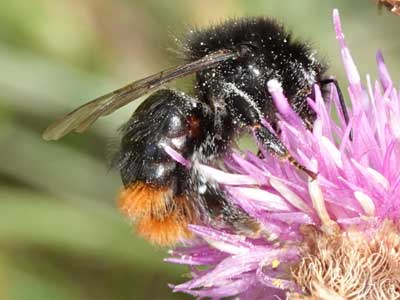
The only common bee that is all black except for its red tail
Buff-tailed Bumblebee
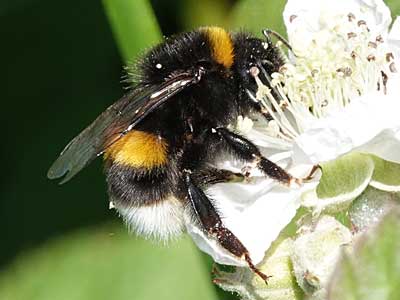
A common bee but it can be confused with the very similar but sometimes paler White-tailed Bumblebee.
Common Carder Bee

Another common bumblebee which has ginger hairs on its thorax and a striped abdomen.
Honey Bee

Honey bees are sometimes kept in hives for their honey, but wild bees often nest in hollow trees.
Mourning Bee
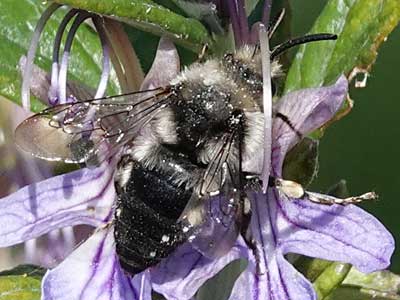
A bee with black and white legs, white spots on its abdomen and white hairs on its face
Red Mason Bee
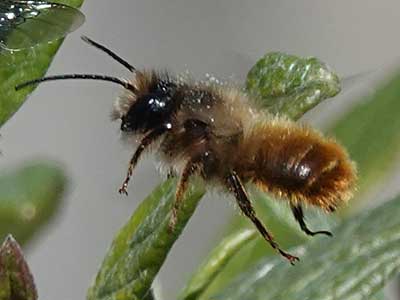
This fairly distinctive bee often builds its nest in brick wall cavities.
Ivy Bee

Ivy bees only appear in the Autumn when Ivy is in flower. Thousands of these harmless bees nest along the cliffs at Galley Hill each year.
Hairy-footed Flower Bee
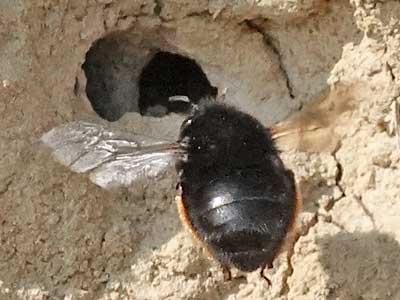
The female Hairy-footed Flower Bee is jet black except for its bright orange pollen brushes. This one was nesting at Galley Hill, but they often frequent gardens.
Wasps
Everyone knows the Common Wasp, although there are several other, very similar social wasps, as they can be a nuisance when you are eating and drinking outdoors in the summer. Social wasps, including the Hornet, live as a colony in a nest with a single Queen. Most wasps though, are solitary, meaning that each female has her own nest in which to lay her eggs. Digger wasps have nests in the ground and potter wasps have nests which are usually above ground, sometimes in brickwork mortar. Many solitary wasps have similar black and yellow markings and their bodies are usually slimmer than the social wasps.
Common Wasp

The wasp you are most likely to see, especially near open air cafés
Hornet

Distinguished by its larger size and its brown and yellow colouring the Hornet has a painful sting but is less aggressive than other social wasps.
Digger Wasp

This is just one of several digger and potter wasps, most of which have very similar black and yellow markings.
Ichneumons
There are over 2500 species in Britain, many of which can only be distinguished by experts. However, these three are fairly common so you might come across them. Ichneumons are parasitoids, and most of the females use their long ovipositors to lay their eggs in the caterpillars of butterflies and moths. The ovipositor may look fearsome but they do not sting.
Amblyteles armatorius
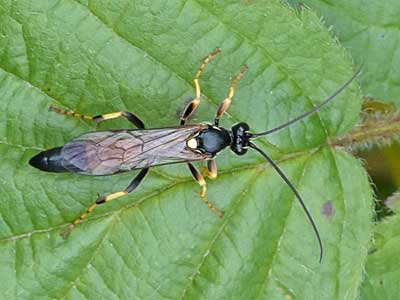
Few other species have these yellow markings which includes yellow abdominal stripes hidden by the wings in this photo.
Pimpla rufipes
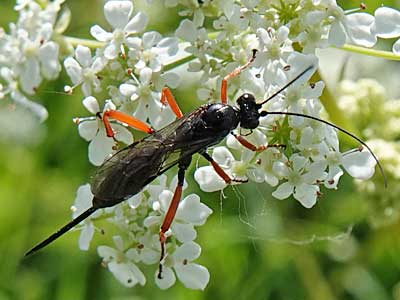
There are several similar species but this is the one you are most likely to see with all-red legs.
Ichneumon sarcitorius
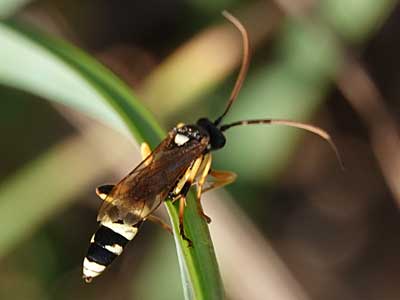
Several fairly common species have similar colouration so identification needs an expert opinion.
Sawflies
There are over 400 British species but they are mostly difficult to identify. These are two that you might see that are fairly easy. They lay their eggs in plant tissue.
Tenthredo temula
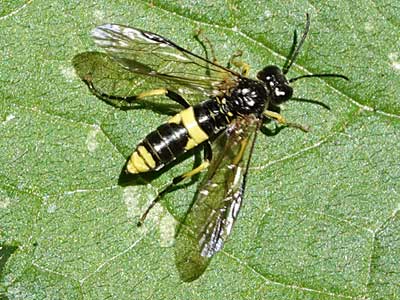
No common name but its distinctive yellow markings are different to other yellow and black species
Turnip Sawfly
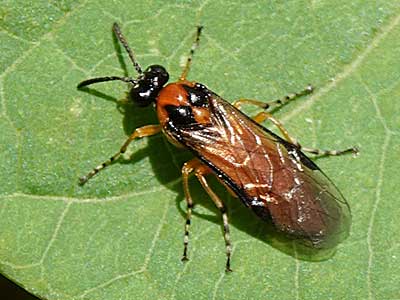
This is the only sawfly with these black and red markings that you are likely to find.